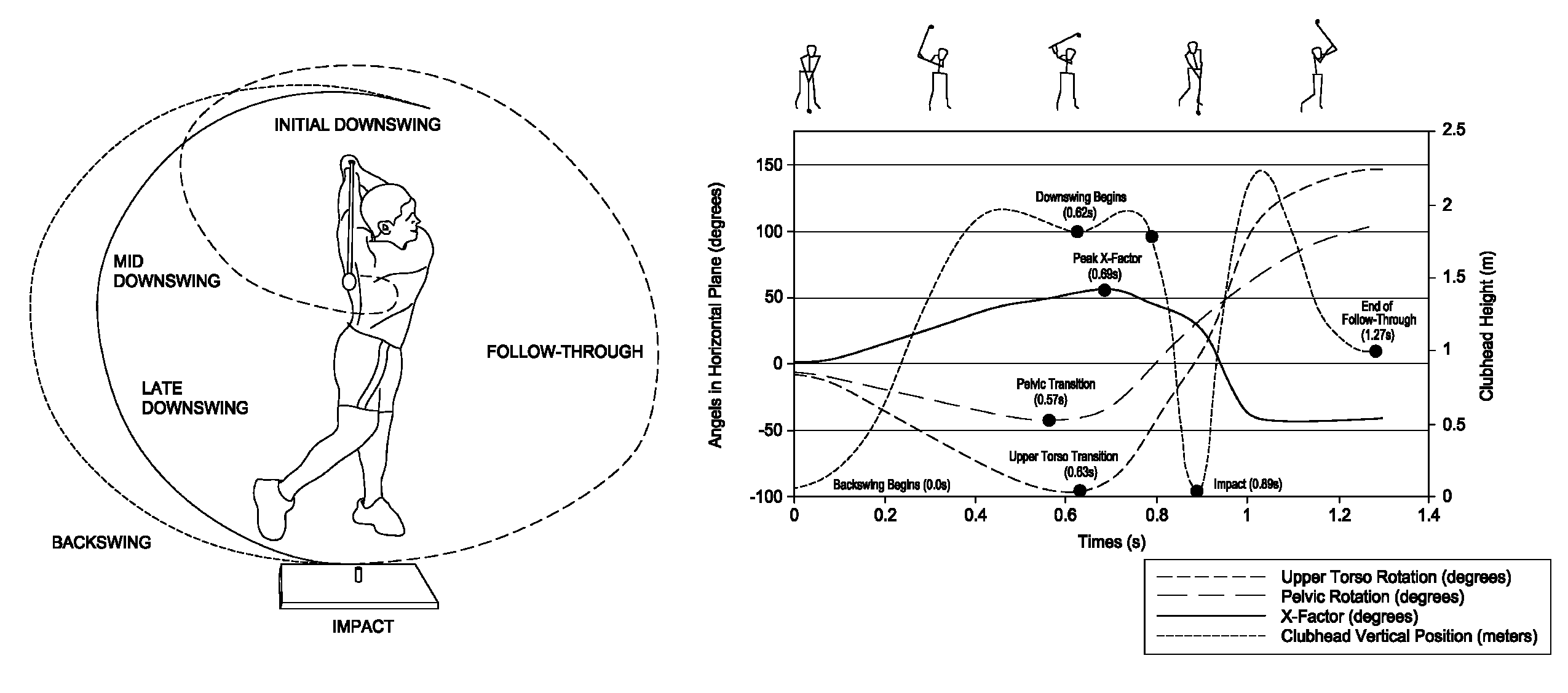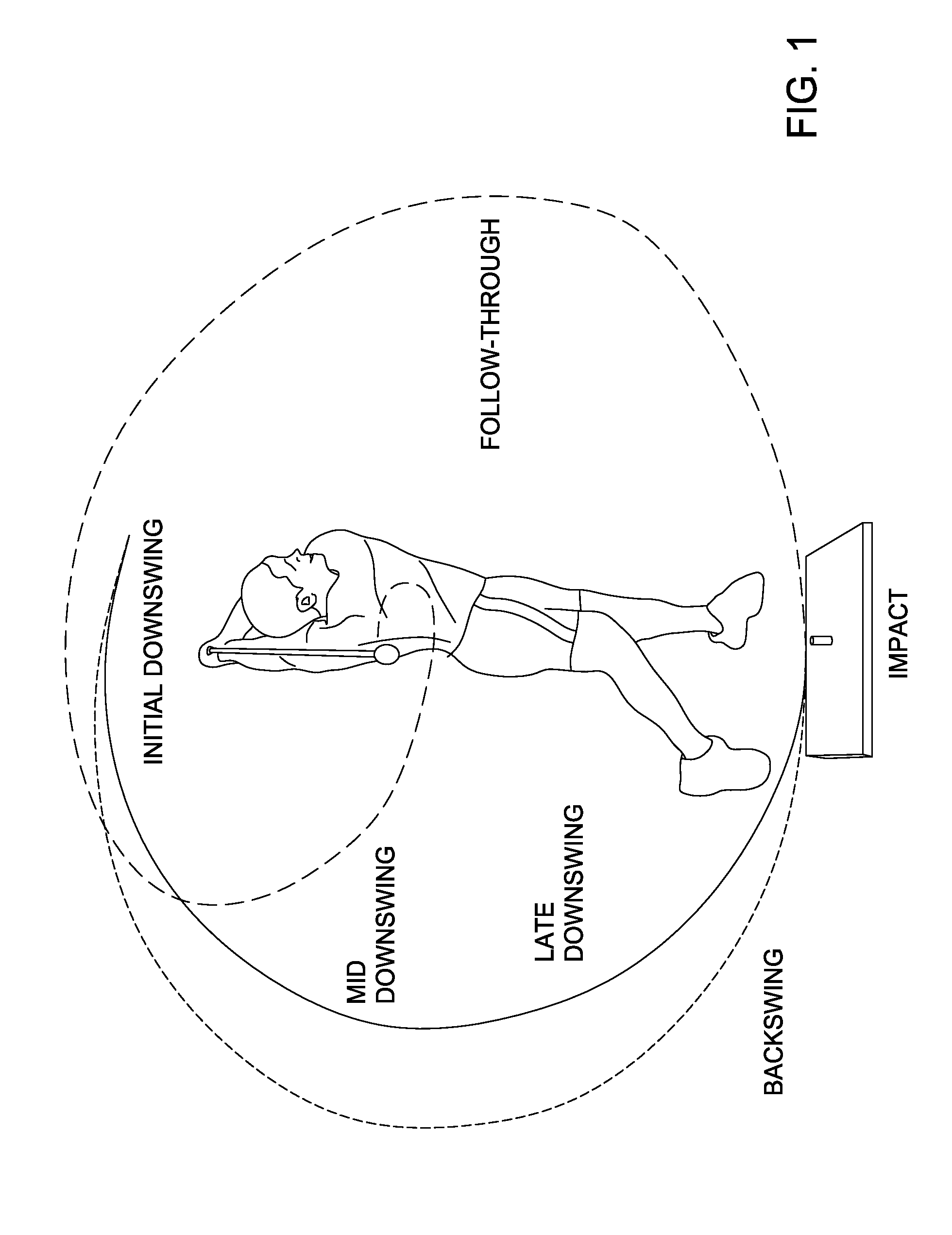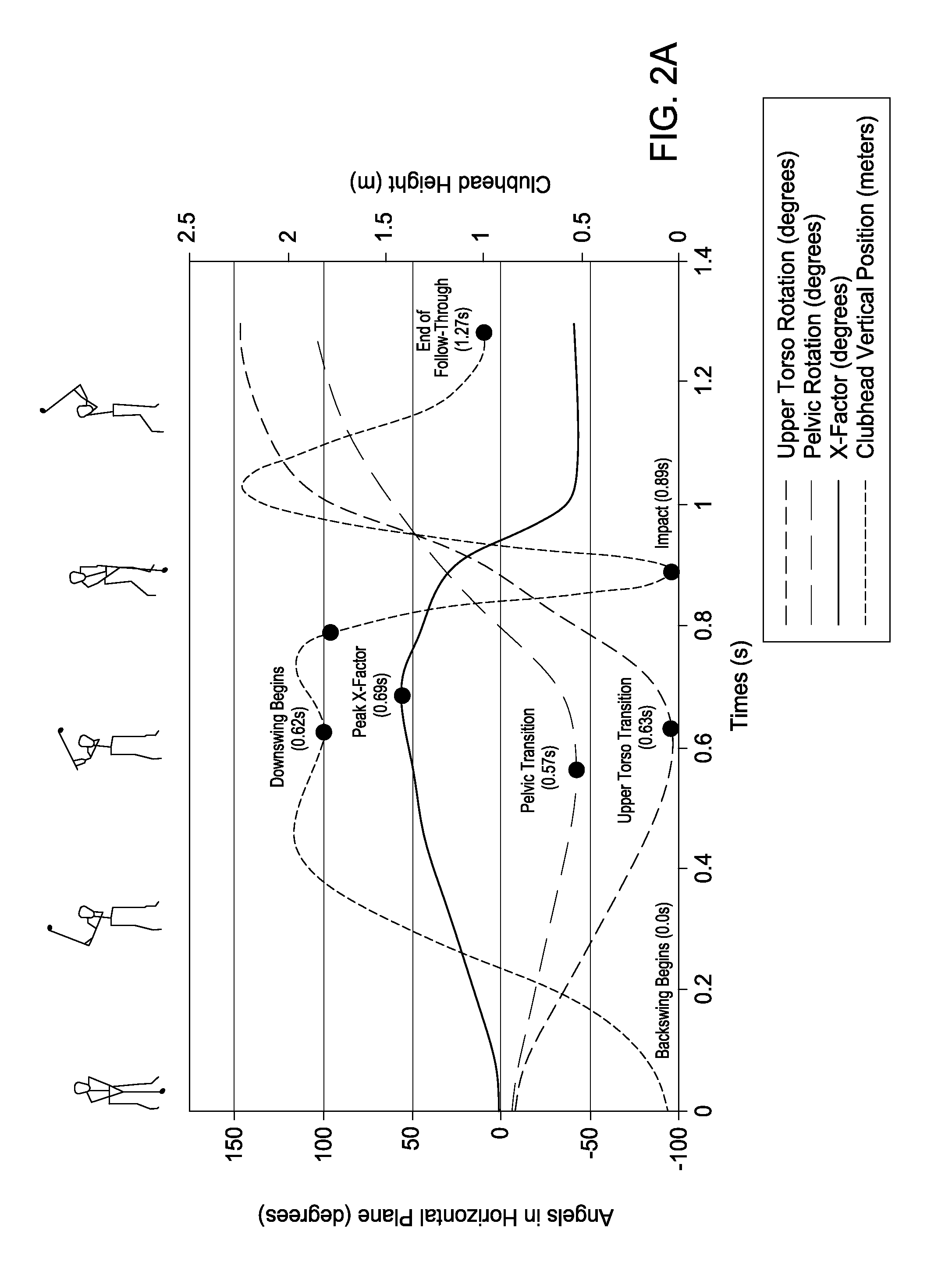Methods for analyzing and providing feedback for improved power generation in a golf swing
a golf swing and power generation technology, applied in golfing accessories, gymnastics exercise, instruments, etc., can solve the problems of golfers or coaches not properly understanding the surprisingly complex set of activities
- Summary
- Abstract
- Description
- Claims
- Application Information
AI Technical Summary
Benefits of technology
Problems solved by technology
Method used
Image
Examples
example 1
Subjects and Protocol
[0052]Ten professional and five amateurs (one low-handicap collegiate (handicap 4), one medium handicap (handicap 15), one high-handicap (handicap 30), and two novices (handicap unknown; they do not play regularly)) right-handed male golfers were tested in the Motion & Gait Analysis Laboratory at Lucile Packard Children's Hospital (Stanford University, Palo Alto, Calif.). Professional and amateur golfers were similar in age (31.0±5.9 years vs. 28.4±6.9 years), height (1.83±0.07 m vs. 1.78±0.03 m), and weight (85.9±11.5 kg vs. 77.3±8.9 kg). The study was approved by the Institutional Review Board, Stanford University and consent was obtained from participants. Forty-two reflective markers were placed on the subjects' bodies, using a combination of the Helen Hayes Marker set and an upper body marker set (Aguinaldo, et al., J. of Applied Biomechanics, 23(1):42-51 (2007); Kadaba, et al., J. of Orthopedic Res., 8(3):383-92 (1990)). Three markers were also placed on t...
example 2
Benchmark Curves and Statistical Analysis
[0055]Biomechanical factors of the professional golfers' hard swings were averaged first within subjects, then between subjects in order to generate mean±S.D. normal curves. Each swing was normalized to a golf cycle phase from the beginning of backswing (0%) to ball impact (100%). The end of follow-through (140%) was defined by the local minimum of vertical clubhead displacement after the club swung around the body during follow-through. Amateur swings were graphed over the professional normal curves for comparison. Swing cycle normalizations and curves were generated using in-house algorithms written in MATLAB (The MathWorks, Natick, Mass.).
[0056]Statistical analyses of the professional golf swing data were performed using SPSS v15.0 (SPSS Inc., Chicago, Ill.). Mean values of biomechanical parameters within each level of effort were calculated for comparison between easy, medium, and hard swings among subjects. Coefficients of variation were...
example 3
Analysis
[0057]For the professional golfers, backswing began with a clockwise rotation of the pelvis and upper torso in the horizontal plane (FIG. 2a). Downswing was initiated by the reversal of pelvic rotation followed by a reversal of upper torso rotation (FIG. 2a). Peak free moment / kg occurred in early downswing (FIG. 2b).
[0058]Peak free moment / kg, peak X-factor, and peak S-factor were highly consistent among the professional golfers (Table 1) and were very strongly correlated to CSI within subjects (Table 2). Peak X-factor occurred just prior to peak free moment in all swings (FIG. 2b). Peak X-factor was more highly predictive of CSI than either peak upper torso rotation or peak pelvic rotation alone (Table 2). X-factor at impact was also highly correlated to CSI (Table 2). S-factor at impact was less predictive of CSI than peak S-factor (Table 2). O-factor at impact and peak O-factor were less consistent (Table 1) and not as predictive of CSI as peak free moment / kg, X-factor at ...
PUM
 Login to View More
Login to View More Abstract
Description
Claims
Application Information
 Login to View More
Login to View More - R&D
- Intellectual Property
- Life Sciences
- Materials
- Tech Scout
- Unparalleled Data Quality
- Higher Quality Content
- 60% Fewer Hallucinations
Browse by: Latest US Patents, China's latest patents, Technical Efficacy Thesaurus, Application Domain, Technology Topic, Popular Technical Reports.
© 2025 PatSnap. All rights reserved.Legal|Privacy policy|Modern Slavery Act Transparency Statement|Sitemap|About US| Contact US: help@patsnap.com



